Introduction to Rudram
Among the various Vedic Hymns Sri Rudram occupies a prime place. Lord Rudra, to whom these prayers are addressed is not a sectarian deity, but the Supreme Being who is omnipresent and manifests Himself in myriad forms. Hence this prayer is also called Satarudriyam – Rudra in hundreds of forms. Rudram reveals the great Panchakshari, the five lettered mantra “Nama Shivaya”. Chanting of Rudram daily is said to confer all blessings – material & spiritual. Sri Rudram is also considered to be an Upanishad.
Namakam – The first chapter (Anuvaka) is a set of prayers to the Lord to give up anger roused against those who transgress divine commandments. The 2nd to the 9th chapters contain the prostrations to His omnipotence and indwelling in all beings. The 10thchapter celebrates the munificence of the Lord and prays for prosperity and warding off all evil. In the last – 11th Anuvaka we get the thanksgiving to the lords attendants – The Ganas.
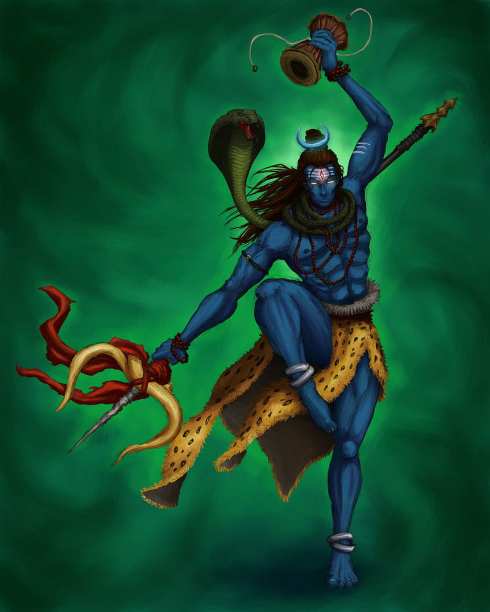
Chamakam is a prayer associated with doing homa at the end of the yagna. These Anuvakas are thus called Vasordhaara. It has the leading statement repeated “Yagnena Kalpantaam” – May everything in this world be offered to God as worship. Chamakam is a compendium of prayers praying for the fulfilment of desires in man. After pacifying the Lord with Namakam when he is in a happier mood you chant Chamakam – which lists 347 benedictions to be bestowed on the chanter.
There is a time honoured tradition that Rudram (Namakam & Chamakam) should be chanted daily with Purusha Suktam. One becomes sinless by chanting them. Sri Rudram occurs in the Karma Kanda of the Yajur Veda
Resources to learn
I referred 4 resources that helped me learn in less than 45 hrs. (Approximately 2 hrs / Anuvaka – 22 Anuvakams across Namakam & Chamakam). The remaining 45 Hrs is to practise again and again and perfect the chanting. You may take lesser time as I have included the script in English with tips for perfect chanting.
GRD Iyers Gurucool has multiple YouTube Videos where all the Anuvakams are taught in traditional Vedic style. Ramesh Natarajan (Guruji) chants to perfection and his students repeat after him. This is the best way to learn.
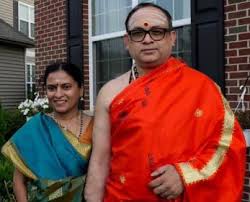
I have enclosed the text in English below for accurate chanting . This will help those who don’t know Sanskrit. After you have learnt the Anuvakam from GRD Iyer’s refer to the YouTube chanting videos by Suresh Ghanapathi or Challikere Brothers to perfect the pronunciation, rhythm and swaras while chanting fast. Initially run the video at 0.75 speed and then at regular speed.
I referred the book Sri Rudram & Purushasuktam by Swami Amritananda for meaning and Sanskrit Script (Ramkrishna Math Mylapore Publications)
Reference Videos
GRDIYERS Gurucool – Chanting Rules
GRDIYERS Gurucool – Rudram Chanting Practise
GRDIYERS Anuvakam 1 – Rudram Namakama
GRDIYERS Anuvakam 2 – Rudram Namakam
GRDIYERS Anuvakam 3 – Rudram Namakam
GRDIYERS Anuvakam 4 – Rudram Namakam
GRDIYERS Anuvakam 5 – Rudram Namakam
GRDIYERS Anuvakam 6 – Rudram Namakam
GRDIYERS Anuvakam 7,8,9 – Rudram Namakam
GRDIYERS Anuvakam 10,11 Part 1 – Rudram Namakam
GRDIYERS Anuvakam 11 Part 2 – Rudram Namakam
GRDIYERS Anuvakam 1,2 – Chamakam
GRDIYERS Anuvakam 3,4 Part 1 – Chamakam
GRDIYERS Anuvakam 4th – 7th – Chamakam
GRDIYERS Anuvakam 8,9 – Chamakam
GRDIYERS Anuvakam 10 – Chamakam
GRDIYERS Anuvakam 10 – 11, Part 2 – Chamakam
GRDIYERS Chamakam Practise
K Suresh Ghanapati – Sri Rudram (Namakam) Chanting
K Suresh Ghanapati – Chamakam Chanting
Rudram Chanting by Challikere Brothers
Chamakam meaning of all the 347 benedictions
Sri Rudram & Purushasuktam by Swami Amritananda for meaning and Sanskrit Script (Ramkrishna Math Mylapore Publications)
Useful tips to Chanting
The beauty of Rudram is when you chant it perfectly. Focus on correct pronunciation, space gap, where to stress, where to move fast, where to slow down etc . I have tried to provide help in my scripts with simple tips to assist the chanter. If you chant correctly one word flows to the other and the energy you generate is immense. It is indeed very satisfying and you will be addicted to chanting this beautiful & powerful mantra everyday. Do learn the meaning – it is profound and beautiful. If you need a PDF Document that highlights the areas to stress, where to pause etc please send me a mail.
Om
Sri Gurubhyo Namaha
Hari Hi Om
Ganapati Prarthna from Yajur Veda
Gananaam Tva Ganapathi Gum
Havamahe Kavim Kavinaam
Upamashravas Tamam
Jyeshtarajam Brahmanaam
Brahmanaspata Aa Nah Shrunvan
Nutibhih Seedha Sadhanam
Om Sri Maha Ganapatiye Namaha
(Om Sri Maha Ganadapitaye Namaha)
1st Anuvaka
We pray to Rudra for His grace. He continues to be angry even after killing Tripurasura. He is angry with the transgression of moral codes. He has two forms – one terrific, the other benign. The devotee is scared of his terrifying form. Hence the prayer to please & propitiate Him invoking His benign form.
Om Namo Bhagavate Rudraaya
Namaste Rudra Manyava Utota Ishave Namahaa
Namaste Astu Dhanvane Bahubhyaa Mutate Namahaa
Yaata Ishush Shivatamaa Shivam Babhuvate Dhanuhuu
Shivaasa RavYaaya TavaTayaanoo Rudra Mridayaa
Ya Te Rudra Shiva TanuuraGhoraa Paapa Kaashini
Taya NasTanuva Santamayaa GirishanTabhiChakaShihii
YaaMishun Girishanta Haste Bibhar Syastavee
Shivaan, Giritra Taan, Kuru MahiGum Si Purushan Jagatah
Shivena Vachasaa, Tva GiriSaccha Vadaamasi
Yatha Nas Sarva MijjaGadaYakshmaGum Sumanaa Asatha
AdhyaVochaDadhiVaktaa Prathamo Daivyo Bhishaka
AhiiGrishcha Sarvaa..Nnn, Jambhayan, Tsavarvaa..Cha Yaatu Dhaanyahaa
Aso YasTaamro , ArunaUta Babhrus Sumangalahaa
Ye Che MaaGum Rudraa, Abhito DikshuShritaas Sahasra So Vai Sa Gum Heda Emahe
AsavYo Vasarpati Nilagrivo Vilohitahaa
Utainan Gopaa AdrashanAdrashan UdaHaaryahaa
Utainam Vishwa Bhutani SaDrishto Mridayaati Nahaa
Namo Astu Neelagrivaya Sahasraakshaaya Meedhusheee..h
Atho Ye Asyaa SatvAaNohan TebhyoKaran Namahaa
Pramuncha DhanvaNastvaaMubhayoRartni YorjyaaMm…
Yaaschate Hasta Ishava ParaaTaa Bhagavo Vapaa
Avatatya DhanusTvaGum Sahasraaksha ShateShudhe
Nisheerya Shalyaanaam Mukha Shivonas Sumanaa Bhavaa
Vijyan Dhanu Kapardino Vishalyoo BanaavaGumUtaa
Aneshan Nasyeshava AaabhuRasya Nishan Gathihii
Ya Te Hetur Midhushtama Haste Babhuuvate Dhanuhuu
TayaasMaaNnn.., Vishwa Tastvama Yakshmaya Yaa Pari Bhuja
Namaste AstvaayudhaYaanaTataaya Drishnaveee..h
Ubhaabhya Mutate Namo Bahubhyaan Tava Dhanvanee
PariTe Dhanvano HetiRasmaan Vrinaktu Vishwatahaa
AthoYa IshudishtaVaare , AsmaNnn Nidhe HiTam
Namaste , Astu Bhagavann Vishwesharaaya Maha Devaaya Triyambakaya Tripurantakaya Trikaagni Kalaaya Kalaagni Rudraaya Neelakanthaaya Mrityunjayaaya Sarveshwaraaya Sada Shivaya Sriman Maha Devaaya Namahaa
2nd Anuvaka
From the 2nd to 9th Anuvaka Lord Shiva is praised in the different forms He takes as a sport for the working of the world.
Namo Hiranyabhaave Senaanye Dishancha Pataye Namo Namo
Vrikshebhyo Harikeshebya Pashunaam Pataye Namo Namas
Saspinjaraya YathVishimathe Pathinaam Pataye Namo Namo
Babhlushaaya VivyaDhinneNaNaam Pataye Namo Namo
Harikeshaayo PaviiTine Pushtanaam Pataye Namo Namo
Bhavasya Hethyay Jagathaam Pataye Namo Namo
Rudraayaa Tathavine Kshetranaam Pataye Namo Namas
SuutaYahanTyayaaVananaam Pataye Namo Namo
Rohitaya SthPataye Vrikshanaam Pataye Namo Namo
Mantrine Vanijaya Kakshanaam Pataye Namo Namo
Bhuvanthaye VaariVaskritha Yaushadhinaam Pataye Namo Nama
UcchairGhoshayaa Kandayate Pattinaam Pataye Namo Nama
KritsnaVeetaya Dhaavate Satvanaam Pataye Namahaaa
3rd Anuvaka
Namah Sahamaanaya NivyaDhinna Aavyadhineenaam Pataye Namo Nama
Kakubhaaya NishangineEeee.. Sthenanaam Pataye Namo Namo
Nishangina Ishudhimathe Taskaranaam Pataye Namo Namo
VanCchate PariVanCchate, Sthayuunaam Pataye Namo Namo
Nicheravee ParicharayaAaranyaNaam Pataye Namo Namas
Srikavibhyo Jigha Gum Sabdhyo Mushnataam Pataye Namo Namo
Simadbhyo NaktanCharadBhya PrakrintaaNaam Pataye Namo Nama
Ushnisheene Giricharaaya Kulunchanaam Pataye Namo Nama
IshuMadbhyo Dhanvaa VibhYascha Vo Namo Nama
AatanVaaNebhya PratidadhaaNebhYasCha Vo Namo Nama
AayaChadadhbhyo Visarjad BhyasCha Vo Namo Namoo….
SyadBhyo Vidhyad BhyasCha Vo Namo Namah
AasiNebhyash Shayaa NebhyashChaVo Namo Namas
SvaPadBhyo Jaagrad BhyasCha Vo Namo Namas
StishTadBhyo Dhaavad BhyascCha Vo Namo Namas
Sabhaabhyas Sabhapati BhyasCha Vo Namo Namoo..
Ashvebhyo Shvapati BhyasCha Vo Namahaa..
4th Anuvaka
Namah AaavyaaDhinii.. Bhyo VividhyanThi BhyasCha Vo Namo Nama
Uganaa Bhyastra Gum Hathe BhyasCha Vo Namo Namo
Gritseybhyo GritSaPati Bhyasha Vo Namo Namo
Vratee…Bhyo VraataPati BhyasCha Vo Namo Namo
Ganebhyo Ganapati BhyasCha Vo Namo Namo
Virupeebhyo Vishwaroope BhyasCha Vo Namo Namo
MahadBhyaahak Shullake BhyasCha Vo Namo Namo
Rathibhyo Rathee BhyasCha Vo Namo Namo
Ratheee…Bhyo RathaPathi BhyasCha Vo Namo Namas
See…Naa…Bhya Senani Bhyascha Vo Namo Namaha
Shatrubhyas SangraHi TriBhyasCha Vo Namo Namas
Takshabhyo Rathakaare BhyasCha Vo Namo Nama
KulaLeebhya KarmaReee… BhyasCha Vo Namo Nama
PunjishTee…Bhyo Nishade BhyasCha Vo Namo Nama
IshukridBhyo Dhanva Krid BhyasCha Vo Namo Namo
Mriga YubBhyas ShvaniBhyasCha Vo Namo Nama
Shvabhyas Shvapati BhyasCha Vo Namahaaa..
5th Anuvaka
Namo Bhavaaya Ch Rudrayaa Ch
Nama Sharvaaya Ch Pashupatayee Ch
Namo Nilagrivaaya Ch Shithikanthaaya Ch
Nama Kapardine Ch Vyupta Keshaaya Ch
Nama SahasrSaakshaya Ch Shata Dhanvanee Ch
Namo Girishaaya Ch ShipiVishtaaya Ch
Namo Meedhustamaaya CheeshuMathe Ch
Namooo… HrasVaaya Ch Vamanaaya Ch
Namo Brihate Ch Varsheey Se Ch
Namo Vriddh Vaaya Ch SamVriddhVane Ch
Namo, AgriYaay Ch Prathamaaya Ch
Nama Aashave Cha Jiraaya Ch
Nama SheegriYaaya Ch SheebhYaaya Ch
Nama UurmYaaya Cha VasvannYaaya Ch
Nama SrothasYaaya Ch Dveep Yaaya Chaa….
6th Anuvaka
Namooo….. Jyeshtaaya Ch Kanishtaaya Ch
Nama Puurvajaaya Cha Parajaaya Ch
Namo Madhyamaaya Cha Pagalbhaaya Ch
Namo JaghanYaaya Ch BuddhiYaaya Ch
Nama SobhYaaya Ch PrathisarYaaya Ch
Namo YaamYaaya Ch KshemYaaya Ch
Nama UrvarYaaya Ch KhalYaaya Ch
Nama ShlokYaaya Cha VasaanYaaya Ch
Namo VanYaaya Ch KakshYaaya Ch
Nama Shravaaya Ch Prathishravaaya Ch
Nama Aashushenaaya Ch Aashu Rathaaya Ch
Nama Shuraaya Cha VabhiNnnDate Ch
Namo Varminne Ch VaruThinne Ch
Namo Bilminne Ch Kavachi Ne Ch
Nama Shrutaaya Ch Shruta Senaaya Chaa…
7th Anuvaka
Namo DhundhubYaaya Cha HananYaaya Ch
Namo Drishnavee Ch PramRushaaya Ch
Namo Dhutaaya Ch PrahiTaaya Ch
Namo Nishanginee Cheshudhimathe Ch
Nama SteeshNeshaave Cha Yuddhine Ch
Nama Swayudhaaya Ch SudhanVane Ch
Nama ShrutYaaya Ch PathYaaya Ch
Nama KaatYaaya Ch NeepYaaya Ch
Nama SuudhYaaya Ch SarasYaaya Ch
Namo NaadYaaya Ch VaishanTaaya Ch
Nama KuupYaaya Cha VatYaaya Ch
Namo VarshYaaya Cha Varsh Yaaya Ch
Namo MedhYaaya Ch VidyutYaaya Ch
Nama EeghriYaaya Cha Tap Yaaya Ch
Namo VaatYaaya Ch ReshmiYaaya Ch
Namo VaastavYaaya Ch VaastuPaaya Chaaa…
8th Anuvaka
Nama Somaaya Ch Rudraaya Ch
Nama Sthaamraaya Cha Runaaya Ch
Nama Shangaaya Ch Pashupataye Ch
Nama Ugraaya Ch Bhimaaya Ch
Namo, AgreVadhaaya Ch DureeVadhaaya Ch
Namo Hantre ChahaNeeyase Ch
Namo Vrikshebhyo Harikeshebhyo
Nama Sthaaraya Nama Shambhave Ch MayoBhave Ch
Nama Shankarayaa Ch Mayaskaraaya Ch
Nama Shivaaya Ch Shiva Taraaya Ch
Nama SthethYaaya Ch KoolYaaya Ch
Nama PaarYaaya Cha VaarYaaya Ch
Nama PratharaNaaya Cho Taranaaya Ch
Nama AataarYaaya Cha LaadhYaaya Ch
Nama Shushp Yaaya Ch FeinYaaya Ch
Nama SikatYaaya Ch PravaahYaaya Chaaa….
9th Anuvaka
Nama IranYaaya Ch PrapathYaaya Ch
Nama KiGum Shilaaya Ch Shayanaaya Ch
Nama Kapardinee Ch Pulastaye Ch
Namo GhoshtYaaya Ch GrihYaaya Ch
Nama SthalpYaaya Ch GehYaaya Ch
Nama KaathYaaya Ch Gah VareshThaaya Ch
Namooo… HridayYaaya Ch NiveshYaaya Ch
Nama PaaGumSavYaaya Ch RajasYaaya Ch
Nama ShushKyaaya Ch HaritYaaya Ch
Namo LopYaaya CholapYaaya Ch
Nama UurvYaaya Ch SuurmYaaya Ch
Nama ParNyaaya Ch ParnaShadhYaaya Ch
Namo Pagura Manaaya ChabhiGhrate Ch
Nama Aakhidate Ch Prakkhidate Ch
Namo Vakkiri Keybhyo Devaana Gum Hridaye Bhyo
Namo Viksheena Keybhyo Namo VicchinVat Keybhyo
Nama Aanirhat(H)eybhyo Nama Aamivat Kebhyahaa….
10th Anuvaka
This Anuvaka consists of 12 Mantras. In this prayer Rudra is requested not to do certain things but grant certain other things.
Draape, AndhaSaspate Daridra Nilalohitaa
Eshaam, Purushaana Meshaam, Pashunaam Maa Bheir Maaro Mo, Eshaan Kinchanaa Mamattt….
Ya Te Rudra Shiva Tanu Shiva Vishwaaha Bheshaji..
Shiva Rudrasya Bheshaji Taya No Mrida Jivaseee… h
ImaGum Rudraaya Tavasee Kapardineeh KshayaDveeraya Prabahara Mahe Mattimm…
YathaNas KshamaSadDwipade Chatushpade Vishwam Pushtam Graame, Asmin Namaa Turan
Mrida No Rudro Tano MayasKridhi KshayaDveeraya Namasaa Vidhematee…
Yacchan Chayoos Ch Manuraaya JehPitaa TadaShyaama Tava Rudra Praneetoo..
Maano Mahaan Ta Muta Maano, Arbhakam Maana Ukshanta Muta Maana Ukshitam
Maano Vadhi Pitaram Moota Maataram Priyaa MaanaStanuvo Rudra Ri Rishahaa
Maanastoke Tanaye Maana Aayushi Maano GoshMaano Ashveshu Ri Rishahaa….
Veeran, Maano Rudra Bhaamitho Vadheer Havishmanto Namasaa Vidhemathe
AaraaThe Googhna Uta Puurushagne KshayaDveeraya Sumna Masme Te, Astu
Raksha Ch No, Adhi Ch Deva Bruh, Yatha Ch Na Sharma Yaccha Dvibaraa…aa…ha
Stuhi Shrutan GarTasaday Yuvaanam Mrigan Bheema MupaHatnu Mugram
Mridaa Jaritre Rudra Sthuvaano, Anyante AsmaNnn Nivapantu Senaa..aa..haa..
AvahSthiraa MaghavadBhyast Anushva MeedhVasStokaaya TanaYaaya Mridayaa….
Midhusthama Shivatama Shivona Sumanaa Bhavaa..
Parame Vriksha Aayudhan Nidhaaya Krittim Vasaana Aachara Pinaakam Vibhra Daagahii…
Vikirida Violhita Namaste, Astu BhagavaHaa
Yaaste Sahasra Gum HetaYoonya MasmaNnn Nivapantu Taa… ha
Sahasraani Sahasradhaa Bahuvoos Tava Hetayahaa
Taasa Meshanoo Bhagava Paraa Cheena Mukhaa Kridhi
11th Anuvaka
Sahasraani Sahasrasho Ye Rudraa, Adi BhumYaa..aam
Tesha Gum Sahasra Yojaneva Dhanvaani Tanmasii
Asmin MahaTyarNavee..eeN(An)Tarikshe Bhavaa, Adhii..
Nilagriva Shithikanthaa..aa Sharvaa, Adaha Kshama Charaaha
Nilagriva Shithikantha DivaGum Rudraa, Upashritaaha
Ye Vriksheshu Saspinjaraa Nilagriva Vilohitaa..ha
Ye Bhutaana Madhipatayoo Vishikhaasa Kapardinahaa
Ye, Anneshu Vividhyanti Paatreshu Pibato Janaanee…
Ye Pathaam Pathirakshaya Aila Bridaa YavYudhahaa
YeEtaa Vantascha BhuuyaaGum SaschaDisho Rudraa VitaSthiree..
Tesha Gum Sahasra Yojaneva Dhanvaani Tanmasii
Namo Rudrebhyo Ye Prithivyaam Yee..Antarikshe Ye Divi Ye Shamann NamVaato VarshaMisha Vasteebhyo Dasha Pracheer Dasha Dakshina, Dasha Praticheer Dasho DeCheir Dashoor Dvaastabehyo Namaste No Mridayantu TeYam Dvishmo YasChhanoo Dveshti Tamvo Dadhaami
Triyambakai Yaja Mahe Sugandham Pushti Vardhanam
Urva Ruka Miva Bandhanaan
Mrityoor Mukshiya MaAmritaat
Yo Rudro, Agnau Yo, Apsu Ya Ooshadeeshu Yo Rudro Vishwaa Bhuvana Vivesha Tasmai Rudraaya Namoo, Astu
Tamashtuhi Yah Svishuh Sudhanvaa Yo Vishwasya Kshayaati Bheshajasyaa…
Yakshwaa..aa Mahe Souu.. Manasaaya Rudran Namooo…oo Bhirdeva Masuuram Duvasya
Ayam Me Hasto Bhagaava, Nayam Me Bhagaavat(T)arahaa
Ayam Mee…ee, Vishwa Bhe..ee Shajoyam ShivaBheem Arshanahaa
Ye Te Sahasra Mayutam Paasha Mrityo Martyaaya Hantavee..
Taan, Yagnyasya MaayaYaaSarvaa Nava Yajaamahe
Mrityave Swaaha Mrityavee Swaahaa…aa
Om Namo Bhagavate Rudraaya Vishnave Mrityur Me Pahi
Prananaam Granthirasi Rudro Maa Vishaantakahaa
TeenaanNeeNaa… Pya Yashwaa
Namo Rudraaya Vishnave Mrityur Me Pahi
Om Shanti Shanti Shanti Hi , Hari Hi Om
Chamakam
Om Sri Gurubhyo Namaha
Hari Hi Om
Anuvaka – 1
Agnaa Vishnu Sajosha Semaa Vardhantu Vaangirahaa.. ,
Dhum Neir Vaaje Bhiraagatham ,
Vaajas Chame Prasavas Chame Prayatis Chame Prasithis Chame Dheetis Chame Kratush Chame Swaras Chame Slokash Chamee, Shraavas Chame Shrutis Chame Jyotish Chame Suvas Chamee, Praanas Chame Paanas Chamee, Vyaanas Chame Sush Chame Chittan Chama Aadhithan Chame Vaak Chame Manas Chame Chakshush Chamee, Shrotran Chame Dakshash Chame Balan Chama Ojas Chame Sahas Chama Aayush Chame Jaraa Chama Aatmaa Chame Tanuus Chame Sharma Chame Varma Cha Meingaane Chame Sthaani Chame Paruugum Shi Chame Shareerani Chameee….
Anuvaka – 2
JayShThyan Chama Aadhi Pathyan Chame
Manyush Chame Bhaamas Chame MasChameemBhash Chame
Jema Chame Mahima Chame Varima Chame, Prathima Chame
Varshma Chame, DraDhuyaa Chame Vriddhan Chame
Vriddhish Chame Satyan Chame, Shraddha Chame Jagacchh Chame
Dhanan Chame Vashash Chame, Twishish Chamee, Kreeda Chame Modash Chame Jaatan Chame Janishya Mannan Chame Suuktan Chame Sukratan Chame Vittan Chame Vedhyan Chame Bhutan Chame BhavishyaCchh Chame Sugan Chame Supathan Chama Riddhan Chama Riddhish Chame Kliptan Chame Kliptish Chame Matish Chame Sumatish Chameee…
Anuvaka – 3
Shan Chame Mayash Chamee, Priyan Chame Nukaamas Chame Kaamash Chame Saumanasas Chame Bhadran Chamee,
Shreeyas Chame Vasyash Chame Yasash Chame Bhagas Chame, Dravinan Chame Yantaa Chame Dharta Chamee, Kshemas Chame Dhritish Chame Vishvann Chame Mahas Chame SaMmVichh Chame Gnyaatran Chame Suush Chame Prasuush Chamee Seeran Chame Layash Chama Ritan Chame(A)Mritan Chame Yakshman Chamee Naa MayaCch Chame Jeevatush Chame DheergaaYutVaNn Chame Na Mitran Chame Bhayan Chame Sugan Chame Shayanan Chame Suusha Chame Sudinan Chamee….
Anuvaka – 4
Uurk Chame Suunrita Chame Payas Chame Rasas Chamee, Dhritan Chame Madhu Chame SagDhish Chame Sapeetish Chamee, Krishish Chamee, Vrishtish Chame Jaitran Chama AudhBhidhyan Chamee Rayish Chame Raayash Chame Pushtan Chame Pushtish Chame VibhuChame , PrabhuChame Bahu Chame Bhuuyash Chame Puurnan Chame Purnataran Chame Kshitish Chame KuuyaVaash Chamee(A)Nann Chamee Shucch Chame Vreeha Yash Chamee YavaAash Chame MaashaAash Chame TilaAash Chame Muddaash Chame KhalvaAash Chame GodhumaAash Chame MasuraAash Chame PriyangaVash Chame NaVash Chamee.. Shyaama KaAash Chame NeevaaraAash Chame
Anuvaka – 5
Asmaa Chame Mrittika Chame Girayash Chame Parvataas Chame Sikataas Chame Vanaspatayas Chame Hiranyan Chame Yas Chame Sesshan Chame, Trapush Chame Shyaman Chame Lohan Chame Nish Chama Aapas Chame Veerudhas Chame Ooshadhayash Chame Krishta Pachyan Chame Krishta Pachyan Chame, Graamyaas Chame Pashava Aarayash Ch Yagnena Kalpanthaam Vittan Chame Vittish Chame Bhuutan Chame Bhuutis Chame Vasu Chame Vasathis Chame Karma Chame Shaktis Chame Thas Chama Emas Chama Itish Chame Gatish Chameee…
Anuvaka – 6
Agnis Chama Indras Chame Somas Chama Indras Chame
Savita Chama Indras Chame Saraswati Chama Indras Chame
Puusha Chama Indras Chame Varunas Chama Indras Chame
Mitras Chama Indras Chame Dhaata Chama Indras Chame
Vishnush Chama Indras Chame Shvinou Chama Indras Chame
Marutas Chama Indras Chame Vishwe Chame Devaa, Indras Chame
Prithvi Chama Indras ChameeN(An)Tariskshan Chama Indras Chame
Dhaush Chama Indras Chame Dishash Chama Indras Chame
Muurdha Chama Indras Chame, Prajapatish Chama Indras Chamee..
Anuvaka – 7
Agum Sus Chame Rasmish Chame DaaABhyash Chame Dhipatis Chama Upaa Gum Sus Chamee(N)Taryaan Mas Chama AindraVaaya Vas Chame Maitra Varunas Chama Aashvinas Chame Prathiprasthaanas Chame Shukras Chame Manthi Chama Aagrayanas Chame Vaishwa Devas Chame, Druvas Chame Vaishwaa Naras Chama Rutu Grahaas Chame TigraHyaas Chama Aindraagnas Chame Vaishwa Devas Chame Marutva Theeyaa.. Aash Chame Mahendras Chama Aadityas Chame Saavitras Chame SaarasVatas Chame Paushnash Chame PaatniVatash Chame Haariyojanas Chame ee..
Anuvaka – 8
Idhmash Chame Barhish Chame Vedish Chame Dhrishniyaas Chame Sruchas Chamee Chamasaas Chame Graavanas Chamee, SwaraVash Chama Uparavaas Chame Ghishavane Chame Dronakalasas Chame VayavvYaane Chame Puuta Bhricch Chama AadhaVaneeyas Chama AagniiDhan Chame Havir Dhaanan Chame Grihaas Chame Sadas Chame PuroodaShaas Chame Pachataash Chame Vabhrutas Chame Swagaa Kaarash Chameee….
Anuvaka – 9
Agnis Chame Dharmas Chameer, Kas Chame Suuryas Chame, Praanas Chamee(A)Shvame Dhash Chame Prithvi Chame Ditish Chame Ditish Chame Dhaush Chame Shakkvari Rangulayoo Dishash Chame Yagnena Kalpantaam Mrikcha Me Saama Chame, Sthomash Chame Yajush Chame Deekshaa Chamee Tapash Chama Rutush Chamee, Vratan Chamee Ho RatraYoo…oor Vrishtyaa Brihad Rathan Tharee Chamee Yagnena Kalpeetam
Anuvaka – 10
GarbhaAas Chame Vatsaash Chame TrayaVish Chame TrayaVee Chame DityaVaat Chame DithYauhi Chame PanchaaVish Chame Panchaavi Chame, Trivatsas Chame, Trivatsaa Chame TuryaVaat Chame TurYauhi Chame PashtaVaach Chame Pashtauhi Chama Ukshaa Chame Vashaa Chama Rishabhas Chame VehaCchh Chame Nadvaan Chame Dhenus Chama Aayur Yagnena Kalpataam, Praano Yagnena Kalpataam Apaano Yagnena Kalpataam Vyaano Yagnena Kalpataan Chakshur KalpathaaGis Shrotrai Yagnena Kalpataam Mano Yagnena Kalpataam Vaag Yagnena Kalpataam Aatmaa Yagnena Kalpataain, Yagnoo Yagnena Kalpataam
Anuvaka – 11
The 11th Anuvaka is beautiful and unique. It consists of numbers. Anuvakas 1 to 10, the devotee prays for almost everything needed for human happiness. In the 11th Anuvaka, the devotee prays for the desired things not specifically but in terms of numbers, first in terms of odd numbers from 1 to 33 and later in multiples of 4 from 4 to 48.
Ekaa Chame Tisrash Chame Pancha Chame Sapta Chame Nava Chama Ekaadasha Chamee, Trayodasha Chame Pancha Dasha Chame Sapta Dasha Chame Nava Dasha Chama EkaViGum Shatish Chamee , Trayo ViGum Shatish Chame Pancha ViGum Shatish Chame Sapta ViGum Shatish Chame Nava ViGum Shatish Chama Eka TriGum Shacchh Chame Trayas TriGum Shacchh Chame ChataSrash Chamee Shtau Chamee Dvadasha Chame Shodasha Chamee Vi Gum Shatish Chame
Chatur ViGum Shatish Chame(Me)Shta ViGum Shatish Chame Dwaatri Gum Shacchh Chame Kshatri Gum Shacchh Chame
Chatvaari Gum Shacchh Chame Chatush Chatvaari Gum Shacch Chame Vaajas Ch PrasaVashChaa Pijas Ch Kratush Ch Suvash Ch Muurdha ChavYashni Yash ChaantYaayanas ChaantYascha Bhau Vanascha BuvaNasChaa(A)dhipatis Ch
Shanti Mantra
Idaa DevaHuur Manur YagnaNeir Brihaspati Rukthaa Madaani Sa Gum Shishad Vishwe Devaa, Suukta Vaacha Prithvi Maatar Maa Mahi Gum Sher, Madhu Manishye Madhu Janishye Madhu Vakshyaami Madhu Vadisyaami Madhumateem, Devebhyo Vaachamudyaasa Gum Shushro Sheenyaa..am Manushyee..ee Bhyastam Ma Devaa Avantu ShobhaaYay Pitaronu Madantuu
Om Shanti Shanti Shantihi
Anuvaka 11 – Significance of numbers
ODD NUMBERS
1 = Nature or Prakriti
3 = The three gunas, namely sattwa, rajas and tamas
5 = The five mahabhutas, or the five basic elements, that is, prithvi, ap, tejas, vayu and akasha, (earth, water, energy or agni or fire, wind and space).
7 = The five sensory organs and the mind and intellect
9 = The nine openings in the human body, called the navadwaras.
11 = The ten pranas and the Sushumna nadi
13 = Thirteen Devas
15 = The nadis or nerve centres in the human body
17 = The limbs of the human body
19 = Medicinal herbs
21 = Important vulnerable parts of the body
23 = Devas controlling serious diseases
25 = Apsaras in heaven
27 = Gandharvas
29 = Vidyut Devas
31 = Worlds
33 = Devas
MULTIPLES OF FOUR
4 = The four ideals of human life, namely dharma, artha, kama and moksha,
(righteous way of life, wealth, desire, and salvation)
8 = The four Vedas and the four upavedas
12 = Six vedangas and six shastras.
16 = Knowledge to be obtained from God
20 = The Mahabhutas
24 = The number of letters in the Gayatri mantra.
28 = The number of letters in the Ushnik mantra.
32 = The number of letters in the Anushtup mantra.
36 = The number of letters in the Brihati mantra.
40 = The number of letters in the Pankti mantra.
44 = The number of letters in the Trushtup mantra
48 = The number of letters in the Jagati mantra
Tags: Learn Rudram in 90 Hrs, Learn to Chant Rudram, Tips to learn Rudram
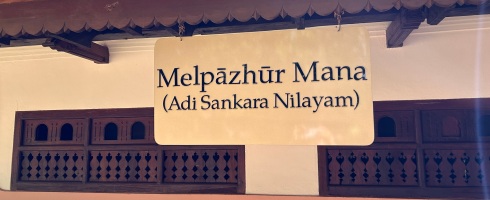
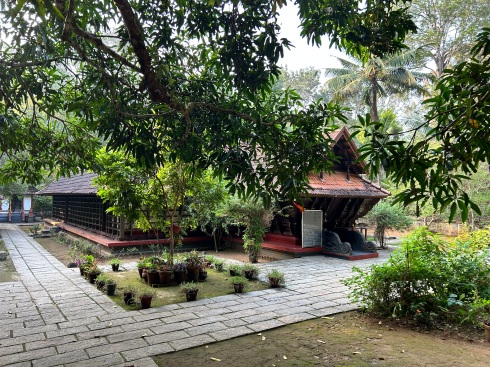
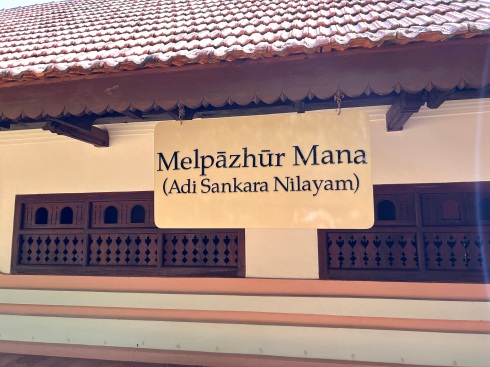
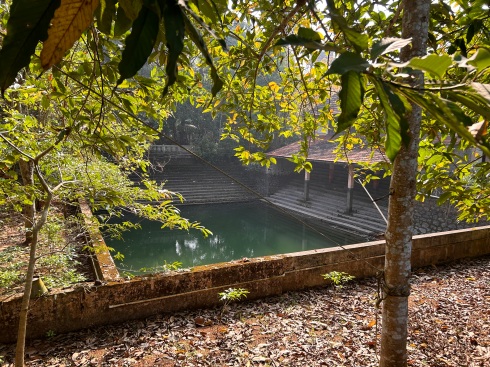
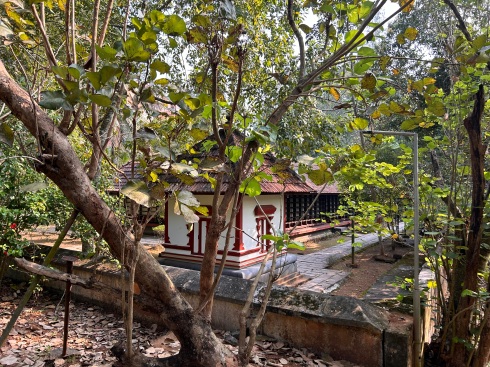
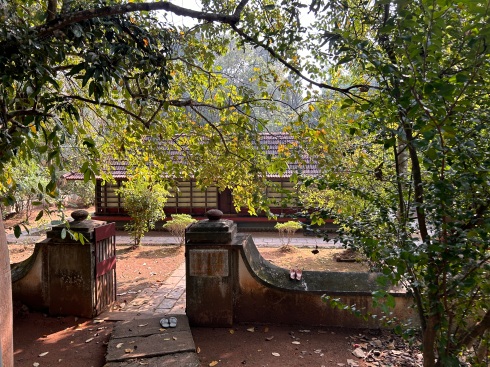
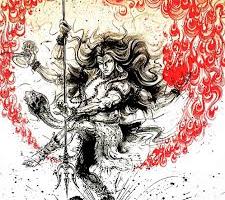


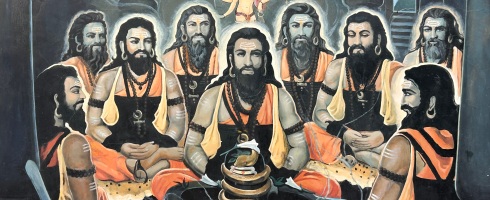
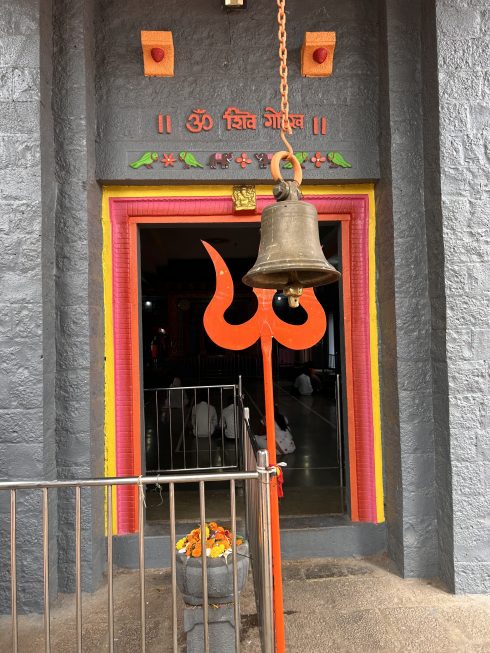
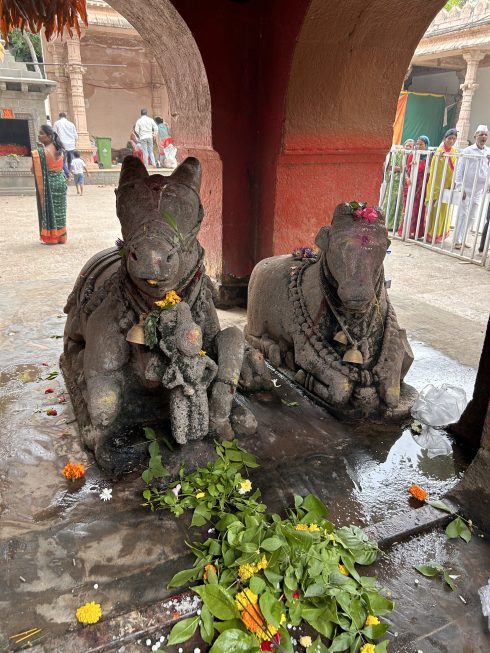
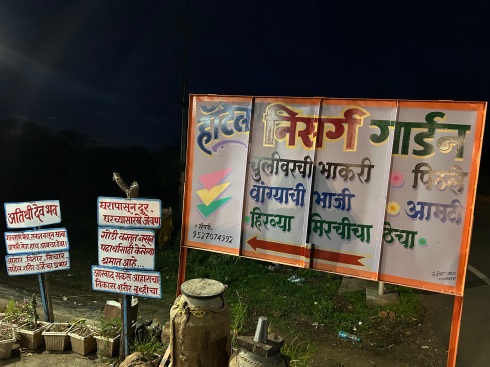
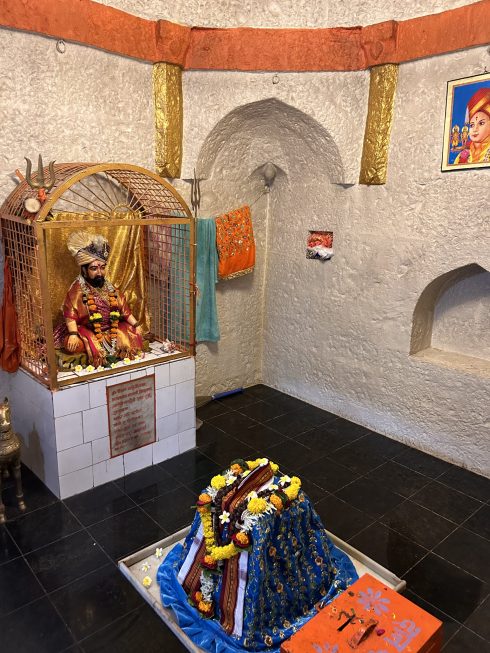
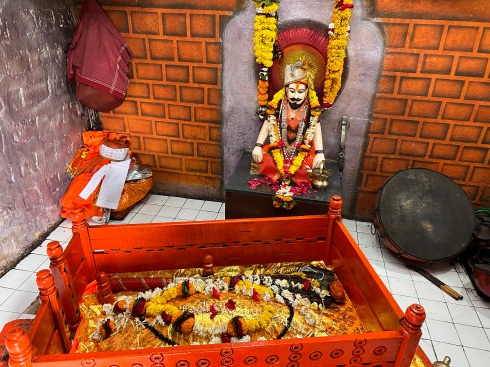
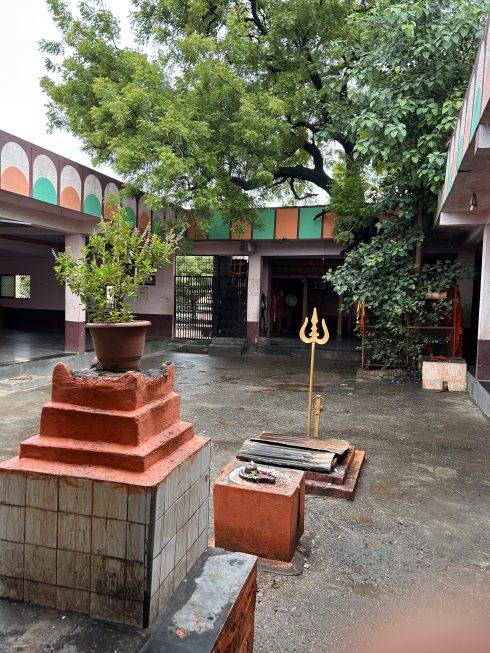
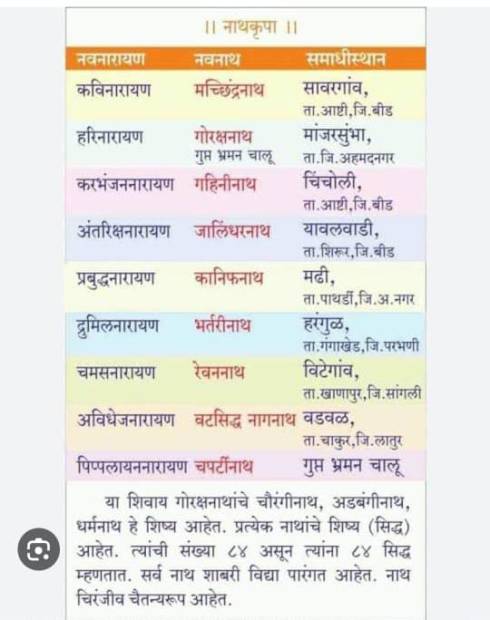


























































Recent Comments